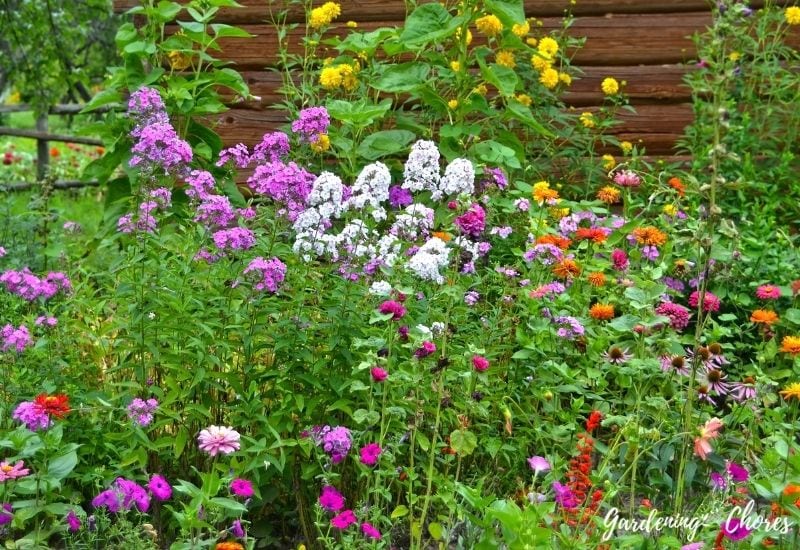
For gardeners and plant aficionados alike, there’s an unparalleled joy in witnessing the first spring blossoms after a long winter. Yet, what if your anticipated tulips and hyacinths, those hallmark bulbs of spring, don’t emerge after the cold months?
You will find the answer in professional gardens where, alongside crocuses and hyacinths, you will also find spring blooming annuals mixed in early-season flower beds!
While many annuals reserve their splendor for summer, certain cold-resilient varieties like sweet peas and bluepleurum announce spring’s arrival with their vibrant blossoms. And here’s an insider tip: you can even “trick” some hardy annuals into believing it’s their time to shine well before their usual season!
With this approach, gaps in your spring floral display become history. Even better, the method is simple.
Eagerly, I look forward to sharing this strategy with you, followed by 12 of my favorite spring-blooming annual flowers to guarantee your garden bursts into a riot of colors as winter’s grip loosens.
Spring Flowers and Annuals
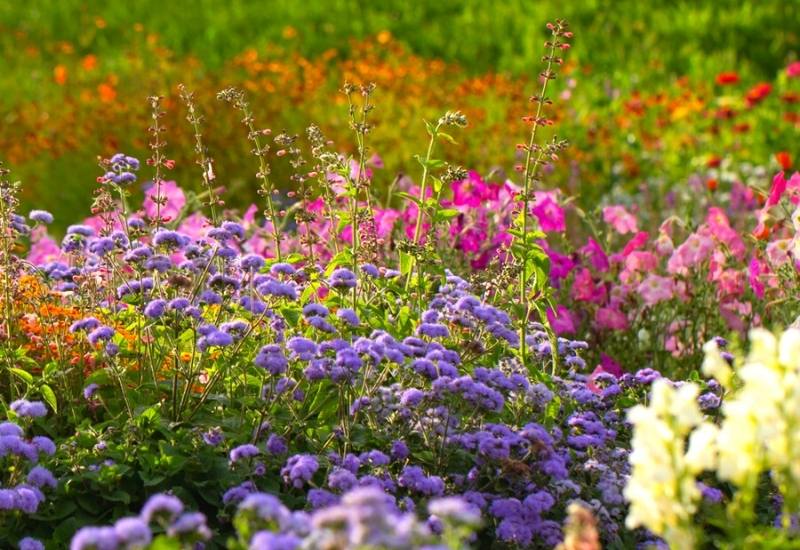
Spring is a great season for flowers and yet many gardens still look a bit “empty” well into the season. Bulbs may fail, especially more delicate ones like hyacinths and tulips. Sometimes perennials have “lazy years”… And annuals tend to bloom in summer. But not all of them and then you can trick them!
Some annuals will start blooming in middle or late spring despite being a few weeks old. Sweet peas and Blupleurum are an example. As soon as they sprout they start thinking about blossoming!
In warm countries you can anticipate the blooming season by planting or seeding annuals early. I would say that in USDA zone 6 or above you can plant hardy annuals earlier to have early blooms. Many cool season annuals are very hardy, to USDA zones 2 to 11 quite often. These can all be easily sown even in winter in hotter regions where it does not freeze!
Finally, you can sow them indoors and give them a head start and as soon as it gets mild enough, you can plant them in your flower beds or borders!
These are a few tricks of the trade for you… So now you know why some professional gardens look so packed with annual flowers even in spring, while yours has gaps…
But which annuals can you use? Up next for you…
12 Prettiest Cool Season Annuals That Burst into Bloom in Spring
Some annuals are best for early blooms, like in June, may or eve April, and you need to know which.
Each has its beauty and needs and we’ll see how to treat each one individually.
Listed below are 12 of the best, early-season annual flowers to bring a burst of color to your spring garden:
1: Blupleurum (Blupleurum spp.)
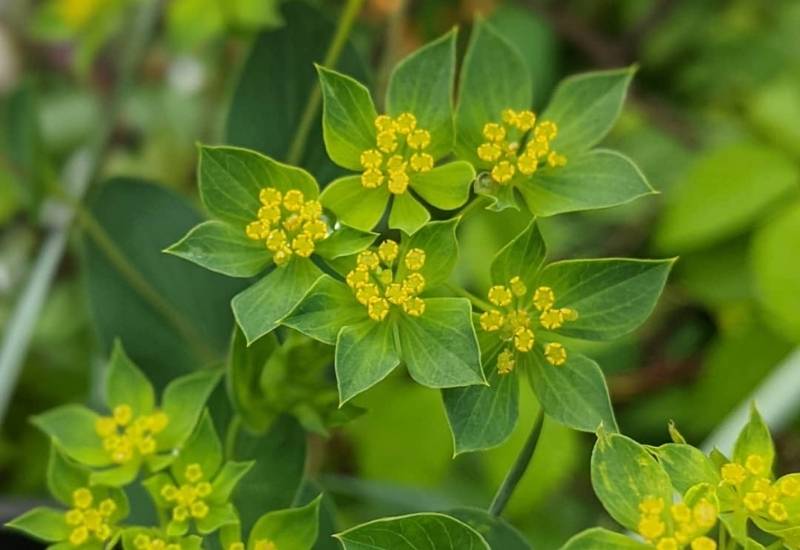
Blupleurum has many hardy annual species with that fresh, green and soothing spring look that’s perfect for the season.
The foliage is interesting, looking almost like bracts, and the flowers appear very early, at the top of the thin branches…. They appear in small inflorescences with pale yellow flowers.
It’s ideal in borders and beds, making a wonderful, thinly textured backdrop for more showy spring flowers.
It is also excellent to accompany cut flowers, as “foliage” but also on its own. It will self seed and come back next year too!
2: Love in a Mist (Nigella damascena)
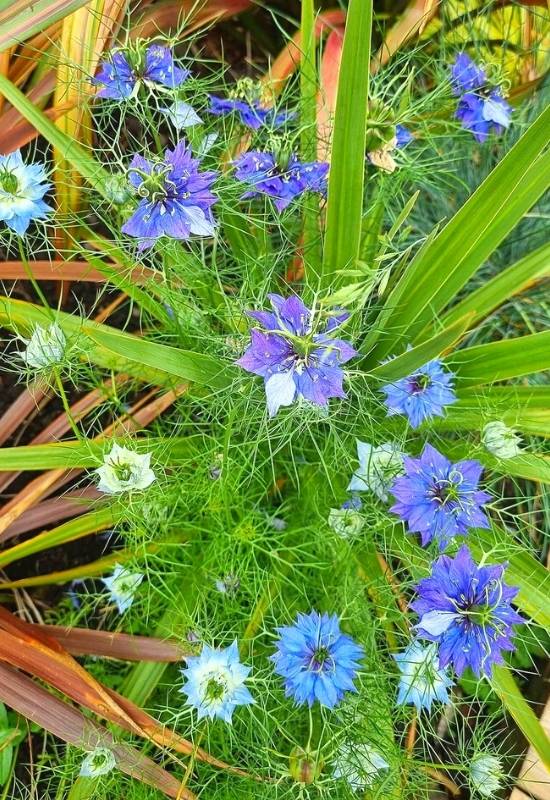
Love in a mist is a hardy annual you can seed early to make it bloom in spring. It has lovely, delicate and sophisticated flowers with a filigree of green foliage that frame them.
They can be white or blue, and the ‘Miss Jeckyll Alba’ is a winner if the prestigious Award of Garden Merit by the Royal Horticultural Society.
Love in a mist is excellent for wild prairies but also for for natural looking borders and beds, and it is a must have in a cottage garden.
3: Pot Marigold (Calendula officinalis)
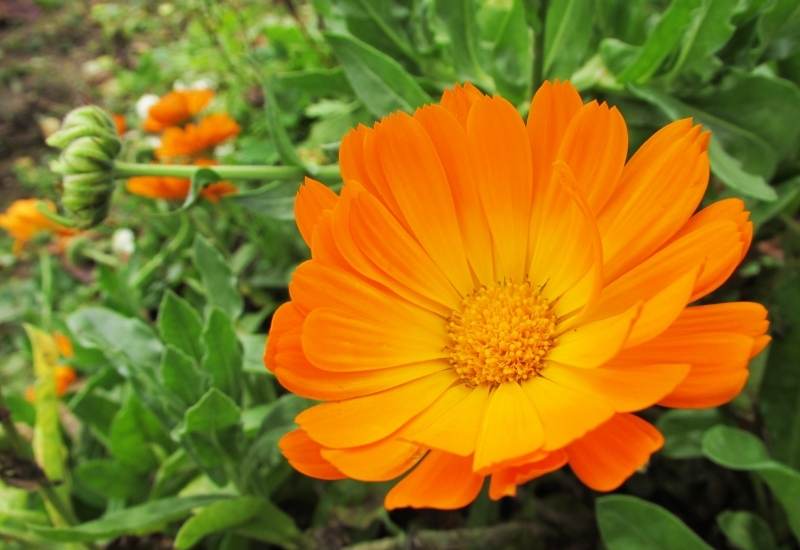
Pot marigold is one of those hardy annuals that will start blooming in late spring naturally. But you can easily have its bright yellow or orange flowers earlier on if you use the early sowing trick!
The blooms are abundant and showy, the foliage is bright green and suitable for this season, and it requires very low maintenance indeed!
In fact if you live in a hot place, treat it as a spring annual, because it does not tolerate intense heat. Use it freely in formal and informal gardens, in basically all settings, including containers and as a cut flower.
4: Annual Phlox (Phlox drummondii)
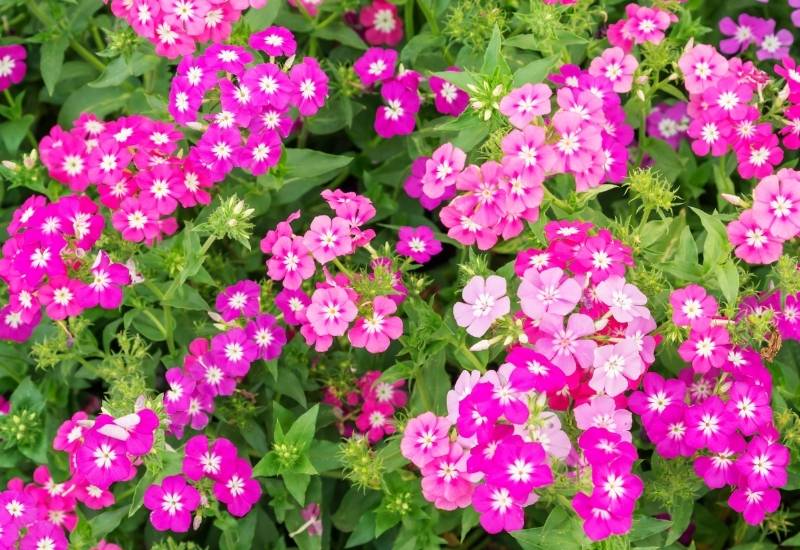
Annual phlox is the perfect no hassle hardy annual for spring blooms. It naturally starts very early, in fact as early as the very start of spring, and it keeps going well past the season, into the summer.
Over this period, it will regale you with a sea of fragrant magenta pink trumpet shaped flowers with a round mouth on top of the light green, tender looking foliage. And all this in exchange for very little care!
Annual phlox has a very natural and almost wild look, so use in in cottage gardens, wild prairies, for ground cover or in any garden you want to look as spontaneous as possible.
5: Pansy (Viola x wittrockiana)
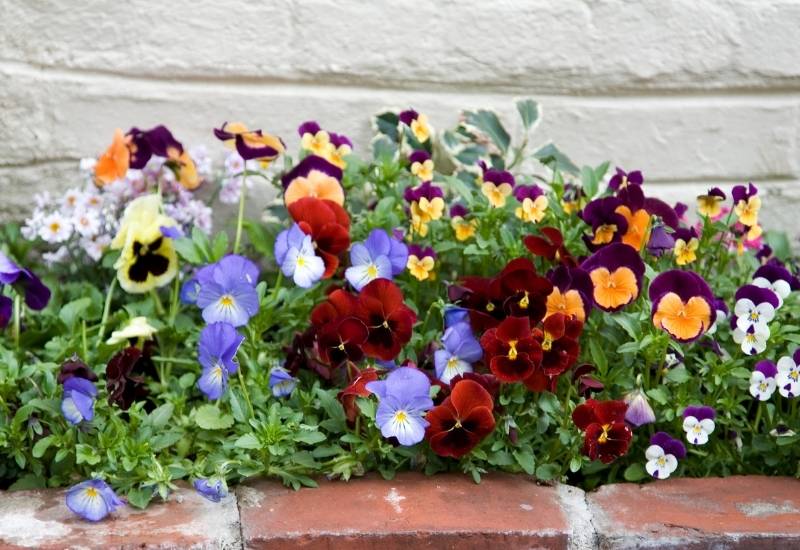
Pansies are natural early bloomers, they start in spring with their showy flowers. In fact, you will see them very often in public parks as early as may.
No need to say that the colors are just wonderful, in all the combinations of the rainbow. Unlike violets, pansies are tender biennials or short lived perennials in nature, and that’s why many people grow them as annuals.
Pansies are great in containers, flower beds and low borders. They look great under trees, shrubs and roses, and they can adapt also to urban and formal gardens.
6: Annual Sage (Salvia horminum)
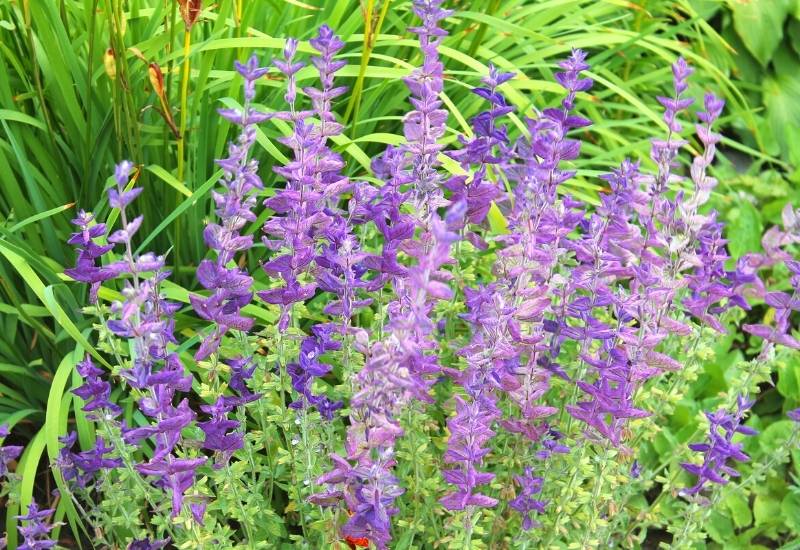
You can trick annual sage to bloom in spring because it is quite hardy. This way, you can have the intense purple violet bracts that form at the top of stems with their impressive velvety texture and look to give your spring garden a little twist.
It is a strong and low maintenance plant that pollinators really love, but pests don’t! Just give it a try…
Annual sage is suitable for informal settings, especially wild prairies and cottage gardens. However you can also use it to give a vertical pull to beds and borders, and even grow it as a cut flower!
7: Pincushion Flower (Scabiosa spp.)
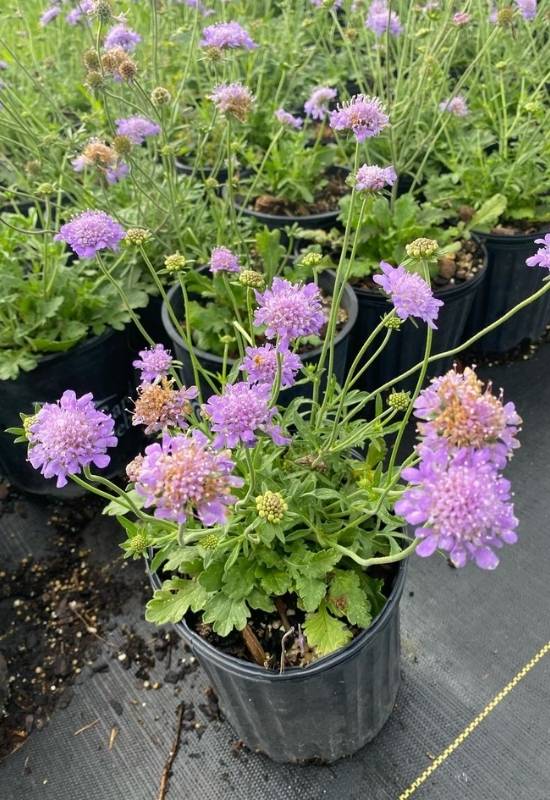
Pincushion flower is a hardy short-lived deciduous perennial is usually treated as an annual that naturally starts its delicate, lace looking blooms in late spring. You can anticipate flowering with early sowing too.
The flower heads have a very fine and elegant composition with a sophisticated texture. They are usually lavender in color, but now there are cultivars in pink, burgundy, blue and purple. It has a very soft and natural look.
Use pincushion flower to add a herbaceous and wild look to borders and beds. However, maybe its best setting is a wild meadow or a cottage garden.
8: Corn Cockle (Agrostemma githago)
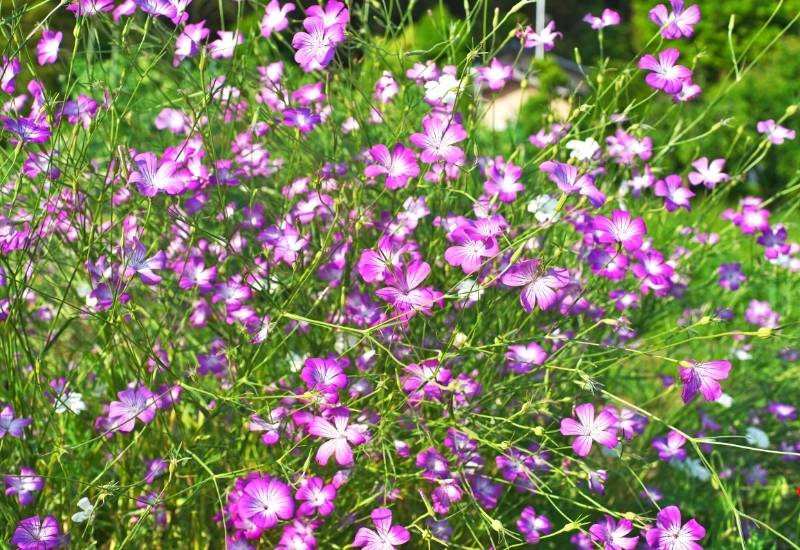
Corn cockle is a semi hardy herbaceous annual that blooms in spring and summer. The flowers are lovely and bell shaped, and they appear on top of stems, looking up at the sky.
They are generous bloomers and they come in a few varieties, like the cultivars ‘Purple Queen’v which is magenta purple, and the white ‘Ocean Pearls’.
Corn cockle is a good choice as ground cover or for a very natural looking corner of your garden or green space. It too is ideal for wild meadows, herbaceous borders and cottage gardens.
9: Sweet Peas (Lathyrus spp.)
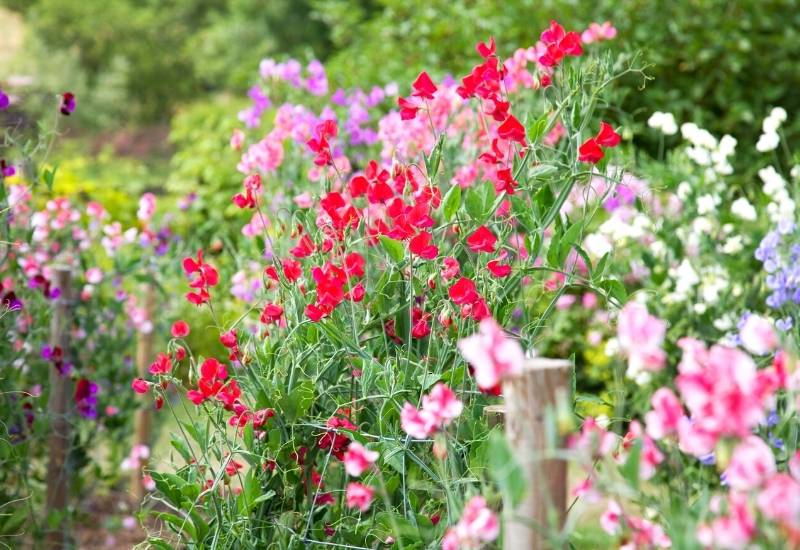
Sweet peas are the blooming champions of annuals and they start late in spring. They are cold hardy, so you can even have the first blossoms even earlier on, like in May or April in some regions. In very hot countries you can even have flowers in winter.
No need to say that these annual climbers fill up with flowers for months on end, till they die off, in fact.
And you can choose any color of the rainbow and combination… Of course, they are super fragrant too and pollinators can’t resist them.
They like fresh conditions, and they are ideal to climb on fences, pergolas and trellises. Use them in natural looking gardens, and the “old world” will suddenly come alive with colors and a lovely scent that lasts for months!
10: Corn Flower, a.k.a. Bachelor’s Button (Centaurea cyanus)
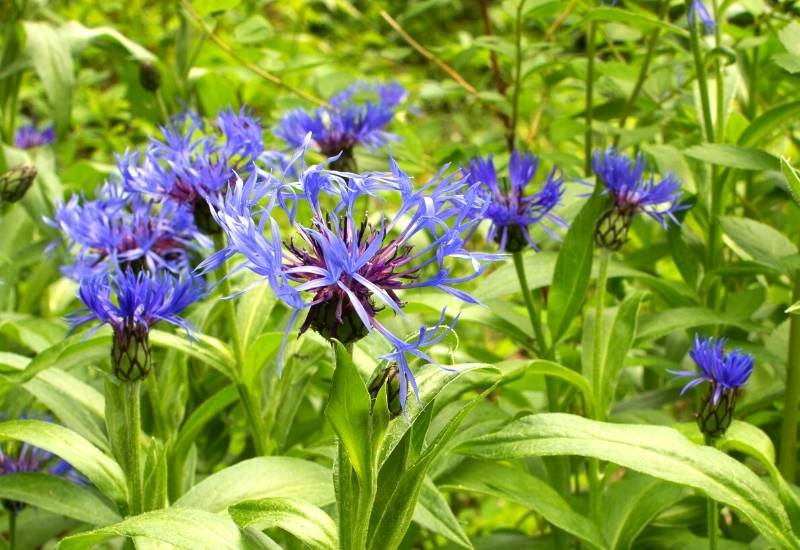
Corn flower is one of the world’s most famous annuals, common in summer corn fields in the wild. But it starts blooming in late spring!
Its blue and elegant flowers are very famous but unfortunately they are becoming rare in the wild due to herbicides. That adds an extra reason to grow it, and in fact it is becoming more and more popular with gardeners.
Corn flower is a must in wild prairies, and it makes a cottage garden look “real”. But you can play with its iconic look and scatter it in borders and beds to add the extra factor or even make them look like they have always been there.
11: Snapdragon (Angelonia spp.)
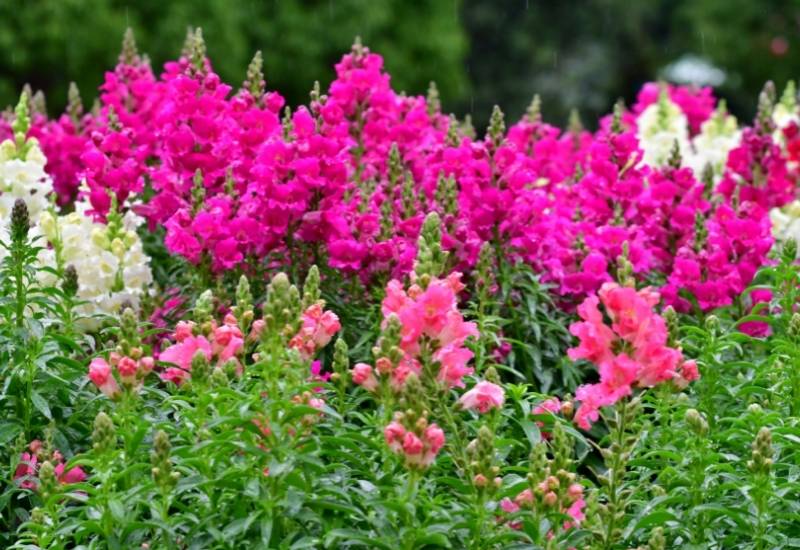
Most people know snapdragon as an annual that starts blooming late in spring and then it does not stop until the first frost comes. Technically it is a tender perennial, but the vast majority of gardeners treat it as an annual.
Enjoy the spikes if cheeky pink, magenta, white, lavender flowers from spring to fall then, and let it self seed at the end of the season. There are orange, yellow and red varieties too now.
Snapdragon is great to give that vertical dimension to herbaceous borders and beds. Its long blooms are safe bet and it too is a must in cottage gardens or designs inspired by them.
12: Poppy (Papaver spp.)
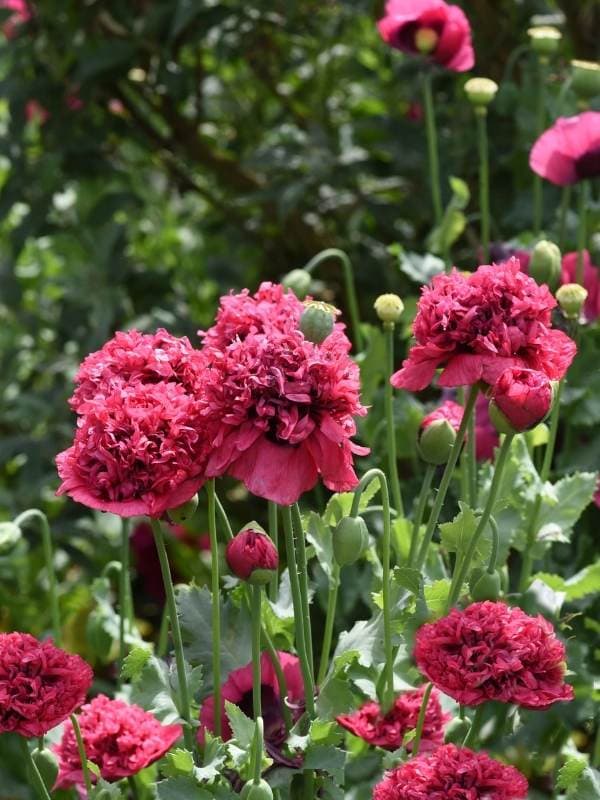
We think of poppies as summer flowers in corn fields but actually they open their red blooms in spring! The warmer it is, the earlier they will bloom, and they are hardy too, so you can anticipate the blossoms.
And they are not just red… Annual poppies can be red (with a black center), purple, white pink, yellow and even orange. They too tend to self seed, so they will come back year after year as long as they find the right conditions!
You could have a whole poppy field, or if you have a wild meadow… really… could you do without some poppies in them?
But they are great allies in borders and beds too! Then again, your cottage garden cannot miss some bright papery poppy heads, can it?
And did you know that poppy leaves are delicious, nutritious and even relaxing? Just sauté them quickly in the pan and dress them like you would with spinach leaves… stunning!
Spring Blooming Annuals Can Make the Difference

True, annuals will tend to bloom in summer. But now you know a few tricks of the trade to get them ready for in spring and you also know some beautiful ones that will naturally bloom in this fresh season.
So, always keep a few bags of annual seeds, and get them ready in a protected place: you never know when a sudden gap will appear in your prized border, and spring blooming annuals are just perfect for the job!

Written By
Adriano Bulla
After many years as an academic in London, Adriano Bulla became a writer, publishing books like A History of Gardening, Organic Gardening and Elements of Garden Design; he then decided to become a gardener, following his childhood dream, and has been following his dream writing and gardening professionally in Southern Europe, where he has specialized in new and innovative organic gardening fields and techniques, like permaculture, regenerative agriculture, food forests and hydroponics.
